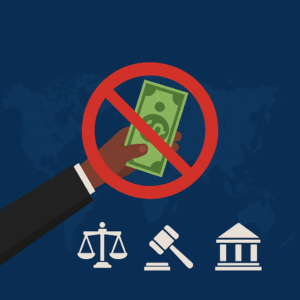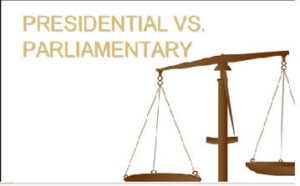All education (primary, secondary, and further education) should be free to all people and paid and managed by the government. Do you agree or disagree with this statement?
Supporters of free education argue that it is a fundamental right and that providing education to all citizens promotes equality and social mobility. They believe that education is a public good that benefits society as a whole, leading to a more educated and skilled workforce, which can contribute to economic development. Several countries around the world offer free or heavily subsidized education at various levels. It’s important to note that the definition of “free education” can vary, as some countries may provide tuition-free education at public institutions, while others may offer financial aid or grants to cover educational expenses.
Take the example of Germany where public universities often do not charge tuition fees for undergraduate programs, even for international students. However, there may be some administrative fees. Similar is the case for Norway. The public universities in Norway are tuition-free for both Norwegian and international students. Finland, too, provides free education at all levels, including higher education, for citizens and residents. While education is free for international students at the basic and secondary levels, some fees may apply for higher education.
The idea that education should be free is supported by several arguments, and proponents often emphasize the societal benefits that result from widespread access to education. First, free education is seen as a means to provide equal opportunities to all individuals, regardless of their socio-economic background. It helps reduce disparities and promotes social mobility by giving everyone a chance to access quality education. Second, providing free education allows individuals from lower-income families to pursue higher levels of education, potentially breaking the cycle of poverty and improving their socioeconomic status.
Third, nations with a highly educated population are often more competitive on the global stage. Investing in education can lead to a more innovative and adaptable workforce, enhancing a country’s competitiveness in the global economy. Moreover, education is often considered a public good with broad societal benefits. A well-educated populace can lead to improvements in health, reduced crime rates, and a generally higher quality of life for the entire community.
Yet another reason why education must be free is that it allows individuals to pursue education without financial barriers, promoting social and economic equality. For instance, in Pakistan children aged between five and 14 years hardly complete their education, while children aged 16 to 20 lose interest in acquiring professional education due to a lack of resources to meet their education expenses. The Pakistan Social and Living Standards Measurement (PSLM) Survey shows that at present 7.3 million children aged between five to nine years are out of school. The overall number of Pakistani children missing schools hovers around 20 million.
Many Universities offer free online courses worldwide. At their best, free online courses allow students from all walks of life to access educational resources that have historically been restricted to a privileged few.
Students enroll in free online courses for a variety of reasons. Some participants are career changers, and others want to sharpen their skills in their current roles. Other learners are preparing for a new educational endeavor, like returning to school. Some are simply pursuing learning for their own sake. Columbia University and Harvard University, University of Massachusetts to name a few. Enrollees often access these courses through learning destination sites like Coursera and edX.
Correspondingly, free education can lead to increased enrollment and graduation rates, improved economic opportunities, and a more educated and skilled workforce. It improves the literacy rates as well. Likewise, Germany which offers tuition-free education for undergraduate programs has a 99% literacy rate for people over the age of 15.
Last but not least is the fact that there has always been inequality when it comes to education. One section of the society is able to afford it while the other can’t. As for the ones who struggle or are not able to pay, paying for school should not be a hindrance to not having an education as these are oftentimes the ones who are very smart. Hence, with the cost of tuition being free, these people will have a chance at getting an education and that gap of inequality can be closed.
Meanwhile, those who disagree with the idea of entirely free education often cite concerns about the financial burden on governments and potential inefficiencies in a government-managed system. They say that individuals who directly benefit from education should share in the cost to some extent and that private institutions may be more efficient in delivering quality education.
Some countries waive tuition but have fees and other costs including books and materials, food, housing, and transportation. For instance, in Ireland, tuition is free for undergraduate courses longer than two years, but average fees (registration, administrative, etc.) can be in the neighborhood of 1,500 euros.
Sweden, on the other hand, actually provides students with a monthly allowance to cover such costs.
Some other cons of free education include increased tax burdens and the possibility of overcrowded academic institutions. Additionally, there could be a devaluation of college degrees and a change in student attitudes, potentially leading to less engagement and seriousness toward college education.
Some facts about the education system in Pakistan
- According to UNICEF [United Nations Children Fund], Pakistan has one of the world’s lowest education expenditures, with only 2.8 percent of its Gross Domestic Product or GDP dedicated to education in 2022.
- According to a study by the World Bank, nearly 23 million Pakistani children aged five to 16 do not attend school, which is the second largest out-of-school population in the world. One of the major issues confronting Pakistan’s education industry is its lack of proper resources.
- Pakistan, the fifth most populous country in the world, has a third of its population under 15 years, according to the United Nations Population Fund (UNFPA). It is imperative to ensure that this young and dynamic population has access to quality education if Pakistan wants to achieve its economic and socio-political potential.
- One of the monumental changes introduced by the 18th Amendment was Article 25-A, which propagated a child’s “right to education.” It reads, “The State shall provide free and compulsory education to all children of the age of five to sixteen years in such manner as may be determined by law.”
📍 English Language Educator | Blogger & Content Strategist | 7+ Years in Educational Blogging
Nosheen Bashir is a dedicated English teacher and experienced blogger with over seven years of expertise in content creation and educational writing. Passionate about language, literature, and effective communication, she combines her teaching experience with blogging skills to create insightful, research-backed content that helps learners and educators alike.
🔹 Expertise & Achievements:
✔ English Language Education: A skilled educator with years of experience in teaching English grammar, literature, and communication skills to students of varying levels.
✔ Educational Blogging: Running a successful blog for 7+ years, delivering well-structured, engaging content on language learning, writing techniques, and academic success.
✔ SEO & Content Strategy: Specializes in creating high-ranking, authoritative articles that follow Google’s EEAT principles, ensuring content that is both informative and search-friendly.
✔ Student-Centric Approach: Committed to making English easier, engaging, and accessible, helping readers and students improve their language proficiency.
🚀 With a passion for teaching and writing, Nosheen Bashir is dedicated to crafting educational content that empowers students, teachers, and language enthusiasts worldwide.










